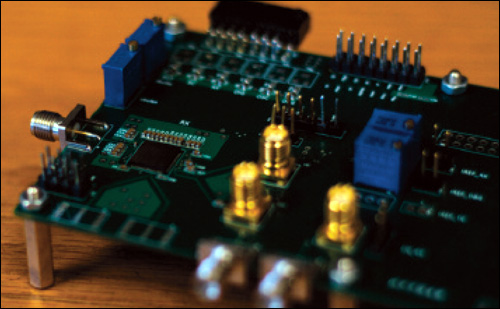Apr 03, 2015Roughly 1.2 billion people—approximately one-fifth of the world's population—live in areas where fresh water for drinking and irrigation is scarce. Optimizing water usage for farming can mitigate the problem, and radio frequency identification-based sensors just might help.
A company called c2sensor is commercializing sensor technology developed by researchers at North Dakota State University (NDSU). "My partner, Chad Ulven, was one of the researchers on the project," says c2sensor CEO Corey Kratcha. "They needed funding to continue development, so it made sense for us to license the technology and continue to work with the university to develop it."

The NDSU researchers conducted a field trial at the Soil Health and Agriculture Research Extension, in North Dakota, with RFID-enabled moisture sensors that are 2-centimeter squares. "Moisture content in irrigated soil is critical," Kratcha says. "Having data that allows farmers to optimize the amount of water they are using saves money and a valuable resource."
c2sensor plans to change the form factor to make the sensors easier to put in the soil. The idea is to make them three-dimensional, approximately the size and shape of an almond, so farmers can plant them like seeds. They would be made of materials that are harmless to the environment. The company also wants to add to the device sensors that can detect nitrogen, potassium and phosphorous in the soil. Optimizing the amount of fertilizer would save farmers money and protect the environment, because there would be less runoff into streams and lakes.
But for the sensors to be of use to farmers, the data collection must be easier than the current method of taking soil samples to a lab. Kratcha envisions passive ultrahigh-frequency RFID readers placed under all-terrain vehicles, so farmers can drive over particular areas and collect a wealth of data on soil conditions. Another option is to use unmanned aerial vehicles (drones) that fly low over fields and collect the information.
This year, c2sensor will conduct field trials using the existing flat moisture sensors, and Kratcha envisions larger field trials involving hundreds of thousands of sensors when prototypes of the almond-shaped devices are available, which he expects to be in 2016.
"We want to add more sensors, so we can get higher resolution of data," he says. "We want to look at different data points that we are able to collect and do a wide variety of queries to see what actionable information you can get."
The almond-shaped moisture sensors will likely be commercially available in 2017, and if the data they provide is as valuable as Kratcha anticipates, they could well take root in farms worldwide.
